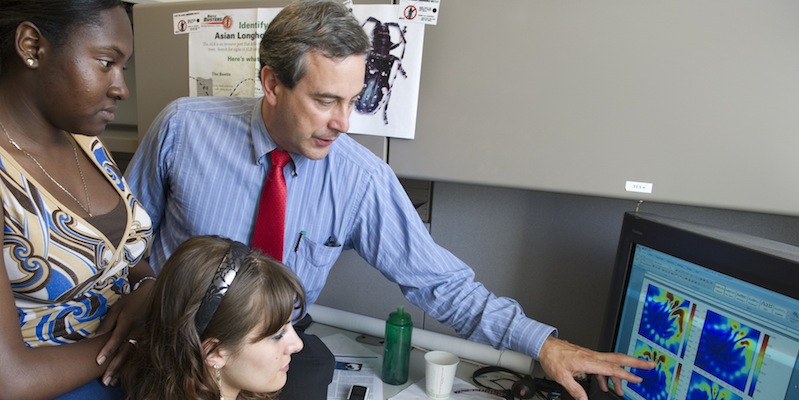3Qs: Train safety on track, but at what cost?

New York Senator Charles Schumer recently called for increased Amtrak security and suggested that a “do-not-ride” list, similar to the no-fly list used in airports, be implemented to prevent suspected terrorists from boarding trains. His concerns came in response to the raid on Osama bin Laden’s compound, which turned up plans to attack the rail system in the United States. Engineering professor Carey Rappaport, the deputy director of Northeastern’s ALERT Center (Awareness and Localization of Explosives-Related Threats), explains the feasibility and effectiveness of a nationwide rail security system and discusses potential public reaction.
Is an enhanced nationwide rail security system realistically feasible? What are the likely obstacles?
Security can always be increased on trains and other transportation systems, but the challenge is to do so without compromising efficiency and convenience, and without breaking the bank. Current rail systems are configured for quick access to trains. Changing the typical train station layout to separate a secure boarding area from the main lobby might require significant renovation. As real estate is usually expensive in the downtown station locations, there is not much flexibility for expansion. Even worse, at smaller stations there may be nothing more than a platform, and controlling access would be completely impractical. Screening passengers at the train doorway might be an option, but would require reconfiguring every active doorway.
How effective might such a system be at preventing an attack?
Deterrence is an important part of transportation security. Any show of attempts to prevent bombings — police presence, video monitoring, random inspection or actual screening systems — help to make trains less attractive to terrorists.
One major aspect that must be considered is the degree of vulnerability of various security scenarios. It would be counter-productive if, by adding security at stations, we increase the density of passengers at choke points in the stations, making the threat of bombing the station more deadly than bombing a train.
How do you anticipate the public to react?
All security sensing systems require human observation and decisions, as well as a separation of bags from passengers. If this can be done without embarrassing passengers or slowing things down too much, the public will likely accept it.





